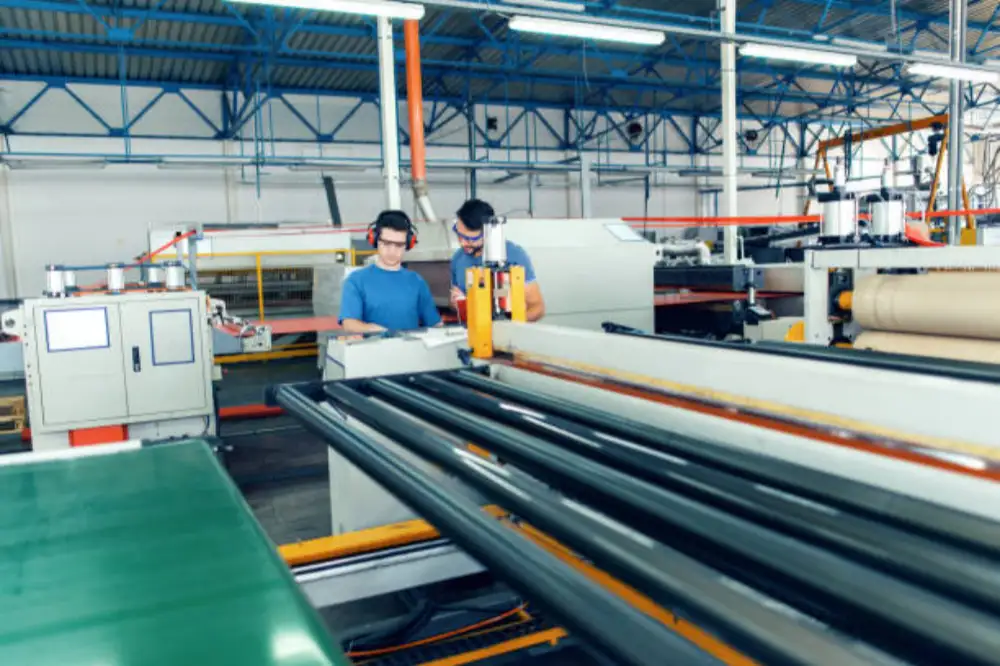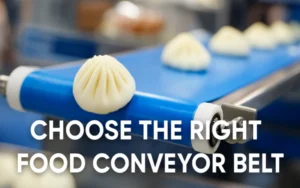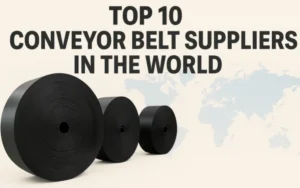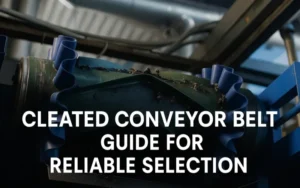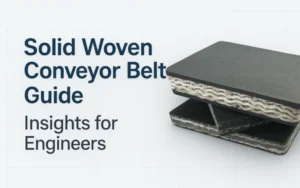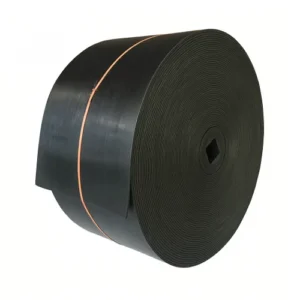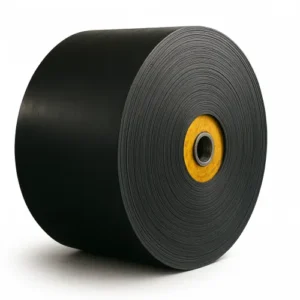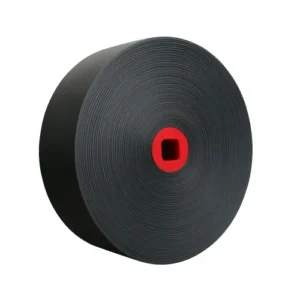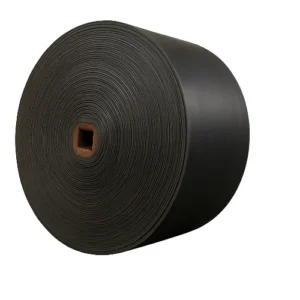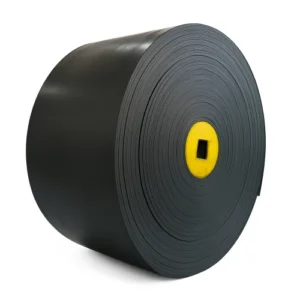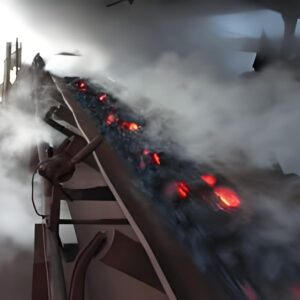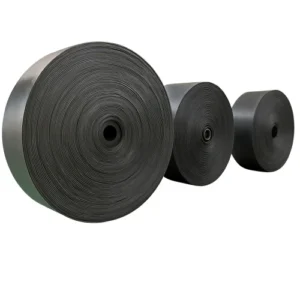1.The role of pvc conveyor belts in wooden furniture manufacturing
In wood furniture manufacturing, the veneering and gluing processes are key aspects that directly affect the appearance and quality of the finished product. The pvc conveyor belts plays a vital role in these processes. Although the conveyor belt does not directly execute the process, it plays an integral role in ensuring the smooth transfer of materials, ensuring the efficiency and accuracy of the production line.
In contrast to stainless steel chain conveyors, pvc beltss avoid scratching or damaging the surface of the wood during transport thanks to their soft and smooth surface, especially for delicate high-end wooden furniture. This advantage is particularly noticeable in the veneering process, where the material is stabilized during processing, avoiding slippage or misalignment.
In addition to the above advantages in the production process, pvc belts are highly competitive. Compared to rubber conveyor belts, pvc conveyor belts are not only cheaper, but also less expensive to maintain. While rubber conveyor belts excel in certain high-temperature or specialty applications, pvc conveyor belts are the preferred choice for manufacturers of conventional woodworking machinery due to their durability, low maintenance requirements, and excellent price/performance ratio.
pvc belts are also resistant to corrosion and oil, and remain stable for long periods of time in complex production environments, a characteristic that effectively extends the life of the conveyor equipment, helping companies to reduce downtime and increase productivity.
It’s these advantages that make pvc belts so important in wood furniture manufacturing, helping manufacturers control production costs while improving automation. So how does the pvc conveyor belts perform in specific processes such as veneering and gluing?
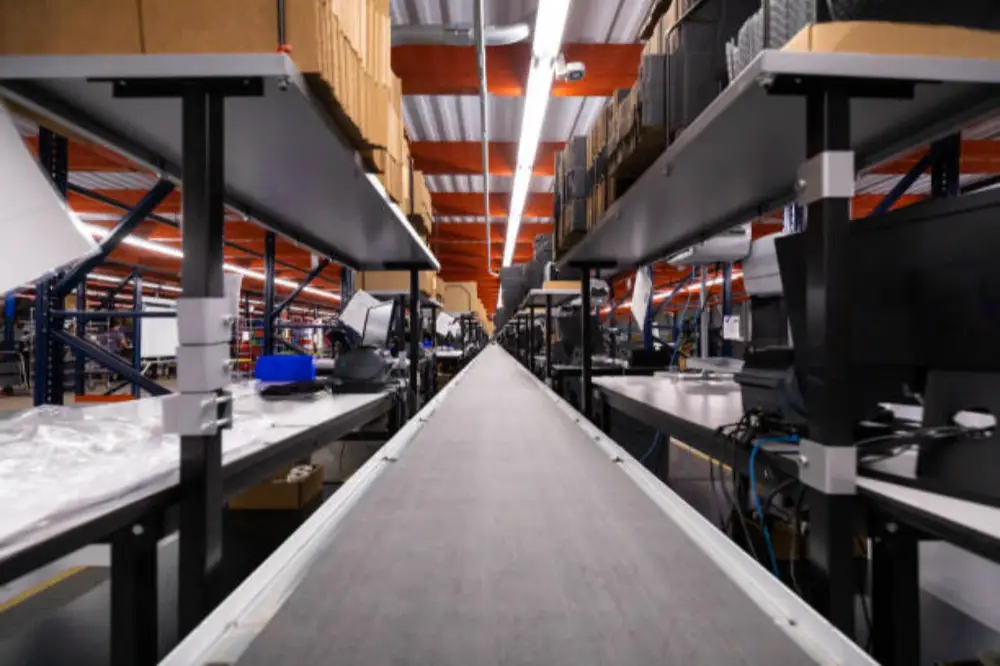
2. Performance of pvc conveyor belts in veneering and gluing processes
The veneering and gluing processes in the manufacture of wooden furniture require a high degree of precision and consistency. As a key component of the conveyor system, the pvc conveyor belts plays a significant role in these processes. It not only improves the stability of the material transfer, but also ensures the continuous operation of the production line, avoiding unnecessary downtime and errors.
In the lamination process, the material needs to be held precisely in its intended position, and any slippage or shifting will affect the flatness of the veneer. pvc conveyor belts have a non-slip design that prevents the timber from shifting out of position during the conveyor process and ensures that the veneer process delivers the desired results. The soft and smooth surface also protects the material from scratches during the conveyor belt, which is especially important when working with high-end furniture.
The gluing process also relies on the precise conveyor function of the pvc conveyor belts. Although modern equipment has avoided direct contact between the glue and the conveyor belt, the conveyor belt still plays a vital supporting role throughout the process. By maintaining a steady conveyor speed, the pvc conveyor belts ensures that the wood passes through the gluing equipment at the appropriate speed, resulting in an even application of glue, reducing waste and increasing productivity.
It is worth noting that certain high-end woodworking machinery and equipment are able to precisely control speed and pressure when incorporating pvc conveyor belts. The conveyor belt is not only able to adapt to different thicknesses of material, but is also highly resistant to abrasion and high temperatures. Its low coefficient of friction allows it to remain stable for long periods of time in high-frequency operation, thus extending the service life of the machine. Equipped with an advanced automation system that regulates the speed at which the material is transported on the conveyor belt, it enables the refinement required for different processes.
These advantages bring considerable benefits to production, not only saving maintenance costs, but also further enhancing overall productivity. By combining with all kinds of high-precision equipment, the application of pvc conveyor belts has gone far beyond the basic conveyor function and become the core support of the whole production line.
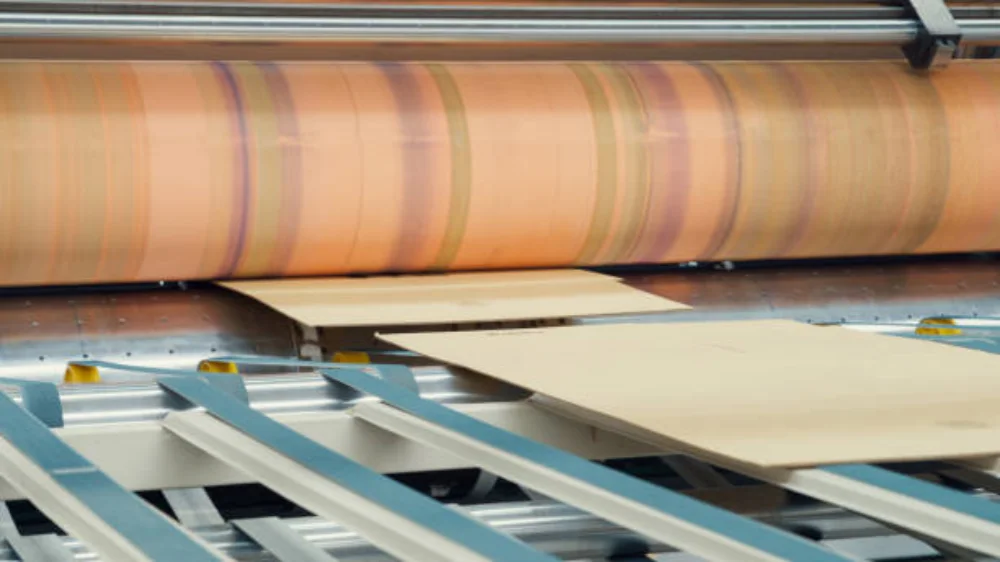
3. Specific applications of pvc conveyor belts in woodworking machinery veneering and gluing process
pvc conveyor belts have a wide range of applications in modern woodworking machinery, especially in the veneering and gluing processes, where they play an irreplaceable role. With its excellent stability and transmission accuracy, pvc conveyor belts provide strong support for the efficient operation of production lines in these segments.
In furniture veneering lines, the material has to pass through several complex processing steps, and the smooth operation of the pvc conveyor belts ensures a smooth transition between each step. Its non-slip properties and precise conveyor speed allow the veneer material to cover the surface of the substrate evenly, avoiding air bubbles or wrinkles, thus improving the aesthetics and quality of the finished product. For manufacturers who demand the most from their laminating process, pvc conveyor belts become the key to increased productivity and product consistency.
pvc conveyor belts also offer significant advantages in the gluing process. During the gluing process, the wood must pass through the gluing equipment at a precise speed to ensure that the glue is evenly distributed, and the pvc conveyor belt’s uniform conveyor function provides stable support throughout the gluing process, preventing the material from being glued unevenly due to unstable speeds. Especially in high-end furniture manufacturing, this precise control brings higher productivity and less material waste.
Combined with advanced automation equipment, the pvc conveyor belts’ multi-layer structure is also designed to accommodate different surface finishing needs. For example, in processes that require smooth surface finishes or complex textured veneers, the adaptability of the pvc conveyor belts helps manufacturers to handle many different types of materials. It not only ensures smooth material transfer, but also provides flexibility when dealing with different processes, greatly enhancing the versatility of the production line.
With these unique advantages, the pvc conveyor belts has become a key component in modern woodworking machinery, especially in the veneering and gluing processes. So how can pvc conveyor belts be optimized when combined with more efficient machinery?

4. Synergies between pvc conveyor belts and automated woodworking equipment
The versatility and flexibility of the pvc conveyor belts is particularly noticeable in woodworking machinery, especially in highly efficient laminating and gluing lines, where it forms a highly compatible combination with advanced automation equipment. In modern production lines, the gluing and laminating process requires a high degree of precision and consistency, which pvc conveyor beltss ensure through their smooth conveyor performance. Whether it is thick wood or delicate sheet material, pvc conveyor belts are able to transfer it with precision, avoiding problems such as slippage and deflection at high speeds, thus guaranteeing the quality of the product.
With the efficient operation of automated machinery, load and speed control of the conveyor system is of paramount importance. pvc conveyor belts significantly reduces the friction between the conveyor belt and the machinery thanks to its abrasion-resistant and low-friction properties, which not only helps to reduce energy consumption, but also reduces wear and tear on the equipment, resulting in a longer service life. When used in conjunction with machinery that operates at a high frequency, these characteristics prevent breakdowns due to excessive friction and ensure long-term stable operation. For factories that need to maintain high levels of productivity over long periods of time, reduced downtime means a significant increase in productivity.
Anti-slip properties also bring more safety to the operation of automated equipment. For some high-precision woodworking machines, any slight slippage or deflection of the material can affect the quality of production. pvc conveyor belts, with their high friction design, are able to hold the material firmly on the conveying surface, ensuring that the material always maintains a precise position during the conveyor process, thus improving the overall precision of the production process.
Combined with the intelligent requirements of modern woodworking machinery, pvc conveyor belts also allow precise adjustment of conveyor speeds according to the different requirements of the production line. Whether it is a high-speed mass production or a delicate and complex process operation, pvc conveyor belts can flexibly respond to meet the needs of different production rhythms. This adaptability greatly enhances the flexibility of the production line, helping manufacturers to quickly adjust their production strategy and maintain a competitive edge in a changing market environment.
By efficiently combining with woodworking machinery, pvc conveyor belts becomes an indispensable core component of the production line, which not only improves production efficiency, but also brings manufacturers higher product quality and market competitiveness.
5. Customized pvc conveyor belts solutions for furniture manufacturing
In wood furniture manufacturing, manufacturers are often faced with a variety of different processes that require different conveyor systems. To meet these needs, pvc belts offer a variety of customized solutions to help manufacturers gain maximum flexibility and efficiency in their production processes. Depending on the requirements of the process, the thickness, material and finish of the pvc conveyor belts can be individually adapted to suit the specific furniture manufacturing needs.
For manufacturing processes that require high temperatures, customized pvc conveyor belts can be made of high-temperature-resistant materials to resist thermal damage in high-temperature environments, which ensures that the belts will operate stably for long periods of time in processes involving high temperatures such as veneering and gluing. In addition, in applications involving high friction and heavy loads, customized conveyor belts can improve material grip by increasing the coefficient of friction of the surface, thus ensuring that heavy or irregularly shaped materials do not slide or shift during the conveyor process.
In addition to functional customization, pvc conveyor belts can also provide low-noise conveying solutions to meet manufacturers’ noise control needs. Low noise pvc conveyor belts are ideal for manufacturers who need to maintain a quiet production environment or wish to reduce noise pollution. Their special design reduces vibration and friction in the drive system during operation, thereby reducing noise levels throughout the production process.
In practice, customized pvc conveyor belts can also meet the specific material requirements of different processes. For example, certain furniture manufacturing processes require conveyor belts with a certain level of chemical resistance to prevent damage to the belt from chemicals in the gluing or surface treatment process. Customized pvc conveyor belts can be tailored to these special requirements using different material combinations or surface treatment technologies to ensure long-lasting durability.
With these customized solutions, pvc conveyor belts not only provide flexibility in adapting to different furniture manufacturing processes, but also help manufacturers to increase productivity while reducing maintenance and operating costs. These personalized designs ensure that the line is able to meet a variety of complex manufacturing challenges, helping manufacturers to gain an edge in a highly competitive marketplace.

6. Future trends: technological innovations in pvc conveyor belts in furniture manufacturing
The use of pvc conveyor belts in wood furniture manufacturing has demonstrated significant benefits, especially in terms of increasing productivity and optimizing processes. From veneering and gluing to surface treatment, pvc conveyor belts help manufacturers address diverse production needs and improve overall competitiveness through customized design and flexible adaptability.
Now that environmental protection and sustainability are becoming one of the core issues in the manufacturing industry, manufacturers are already testing recyclable PVC materials. These materials not only inherit the durability of traditional pvc conveyor belts, but can also be recycled at the end of their service life. This innovation is not only environmentally friendly, but also helps companies reduce material costs and is expected to become a wider choice in the future.
And with advances in automation, some manufacturers are experimenting with combining smart sensing technology with pvc conveyor belts. By installing sensors, conveyor belts are able to monitor the material being transported in real time, such as temperature, humidity, and transport speed, and automatically adjust operating parameters based on the inspection data. This technology is currently being tested on a small scale and has shown significant potential to reduce human error and increase automation and accuracy in production lines.
Other companies are developing more durable and chemically resistant pvc belts for more complex production environments. These belts have special surface treatments to improve abrasion and chemical resistance, allowing them to perform well in harsh production conditions. These materials have already been tested in the production lines of some furniture manufacturers and have shown good results, and are expected to be used more widely in the future.
Through the progressive testing and diffusion of these technologies, pvc conveyor belts will continue to provide stronger support to the wood furniture manufacturing industry. With its flexibility, durability and adaptability to new technologies in current and future markets, pvc conveyor belts will help manufacturers respond to changing demands and maintain a competitive edge.
